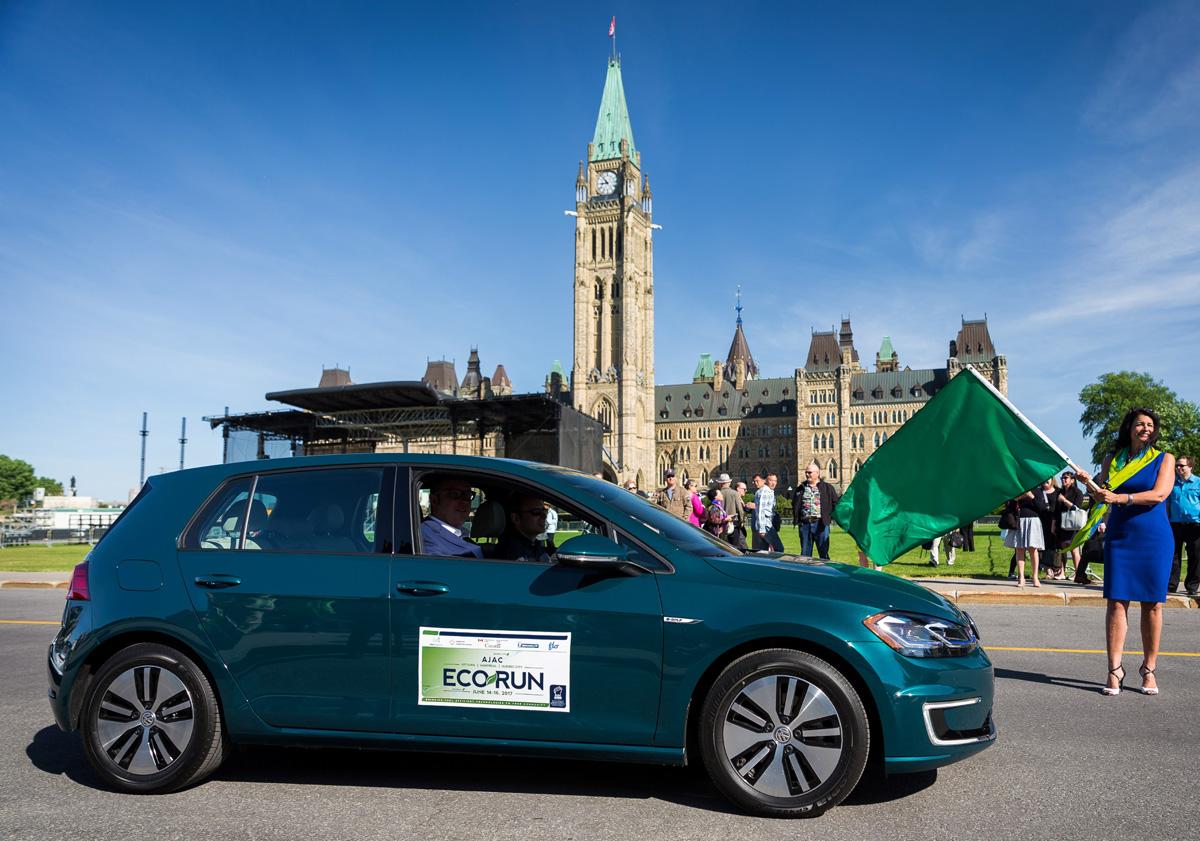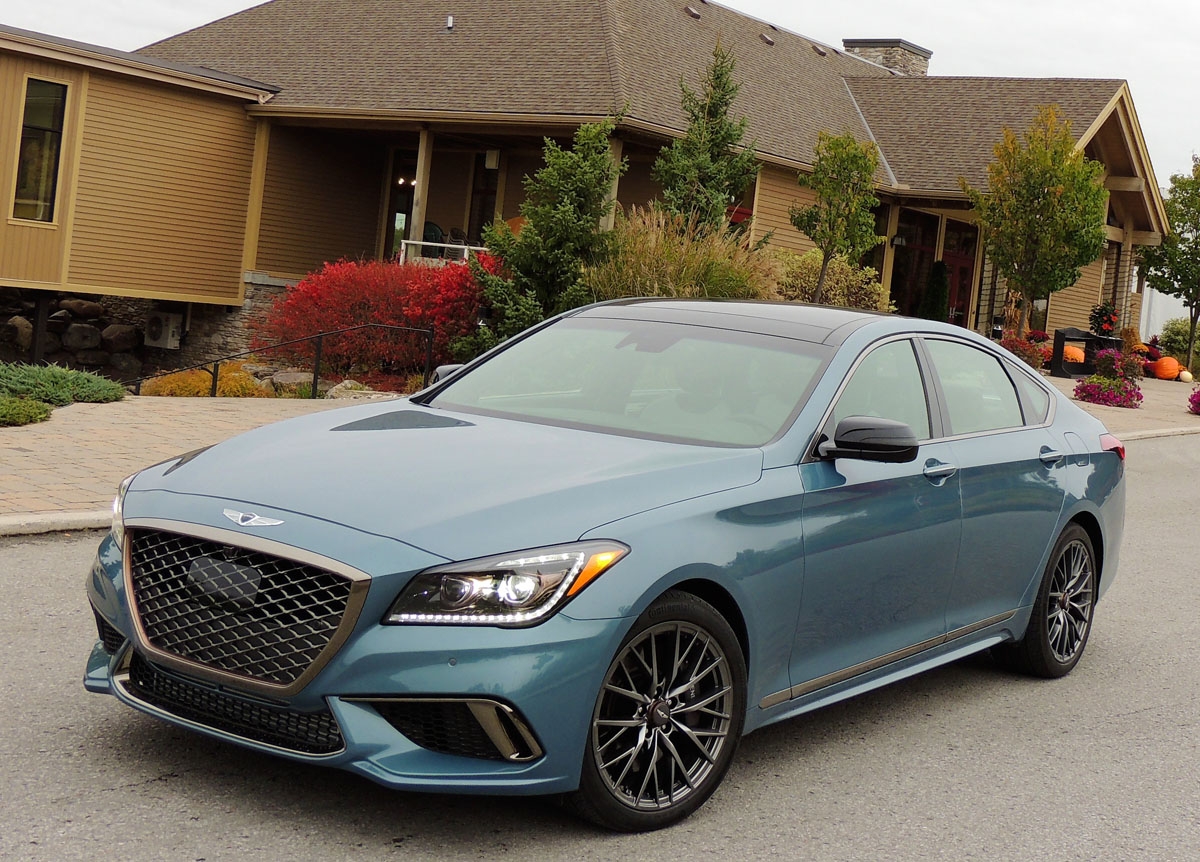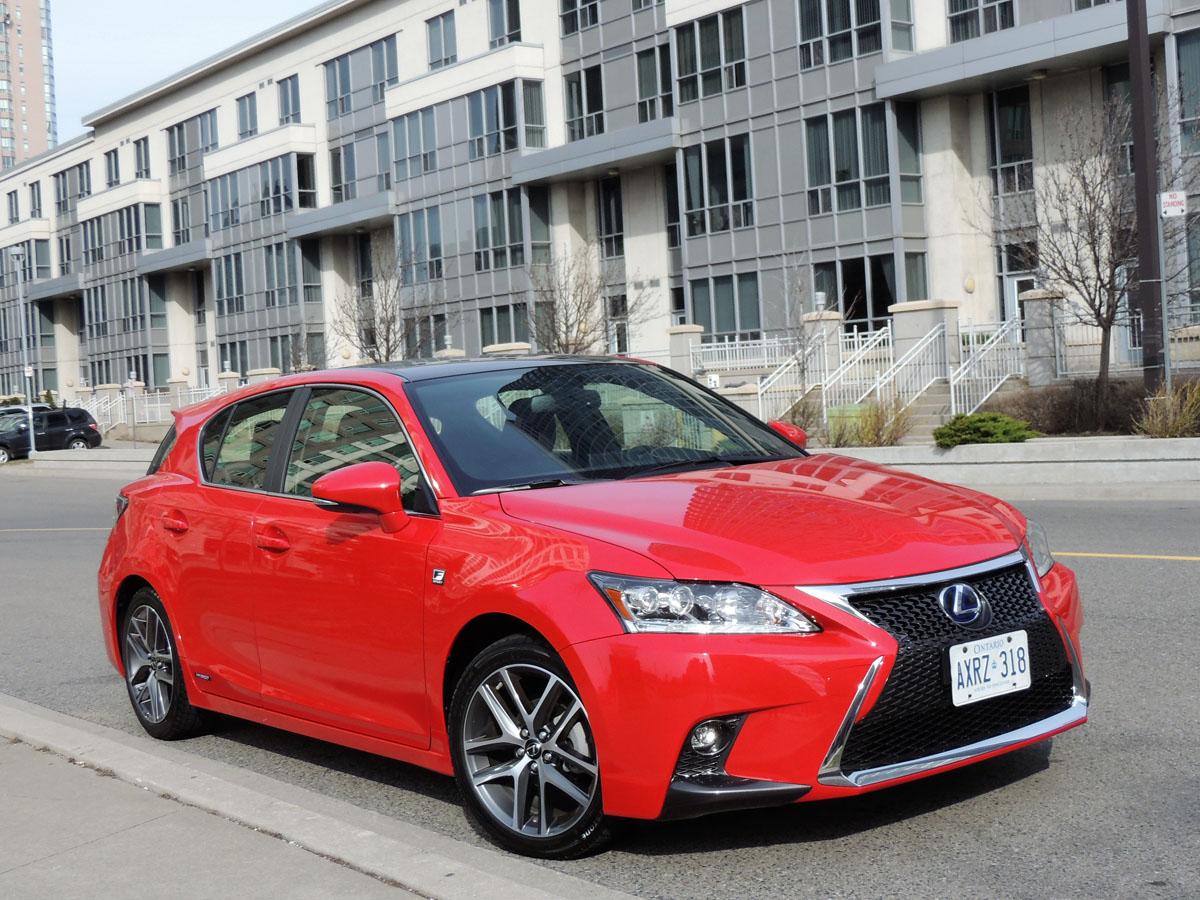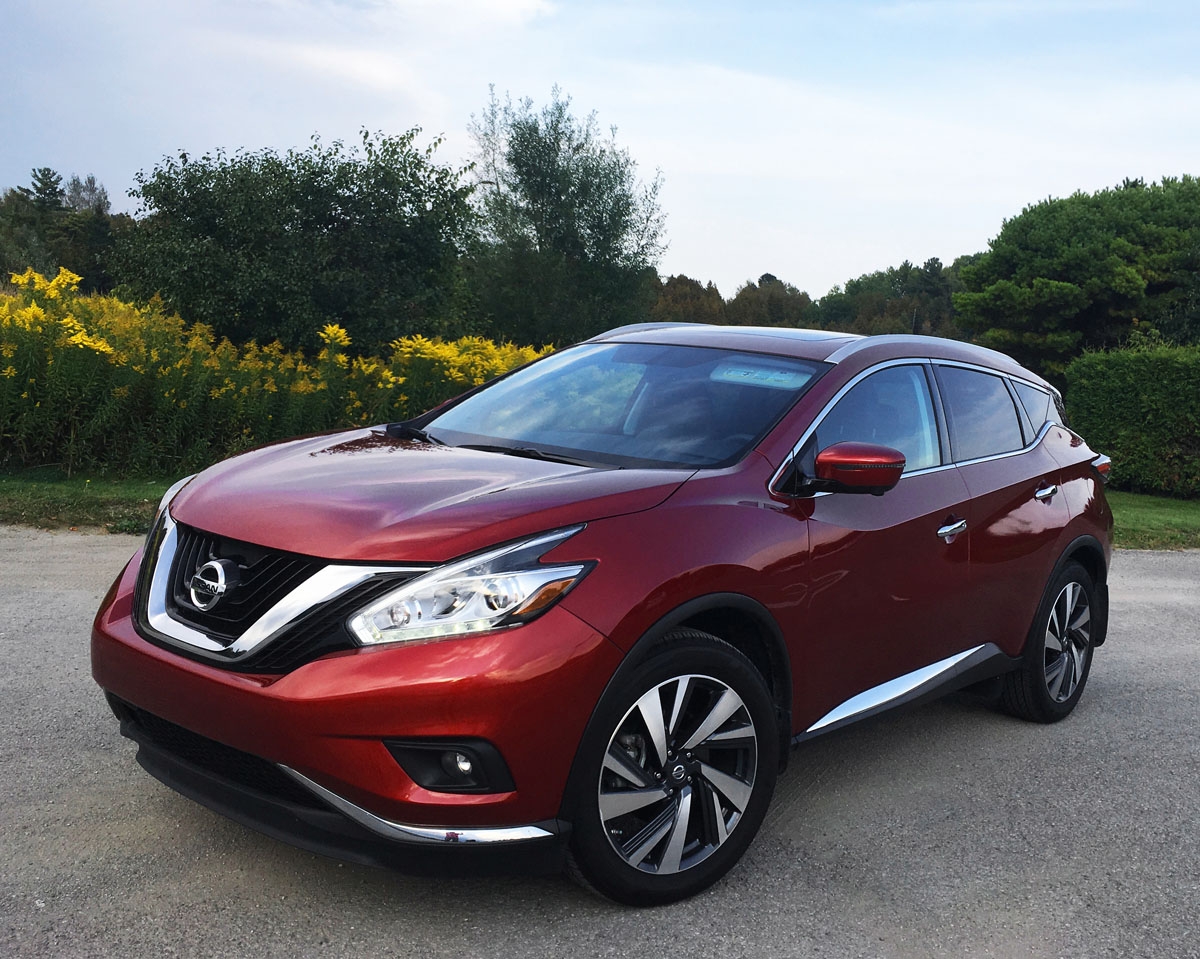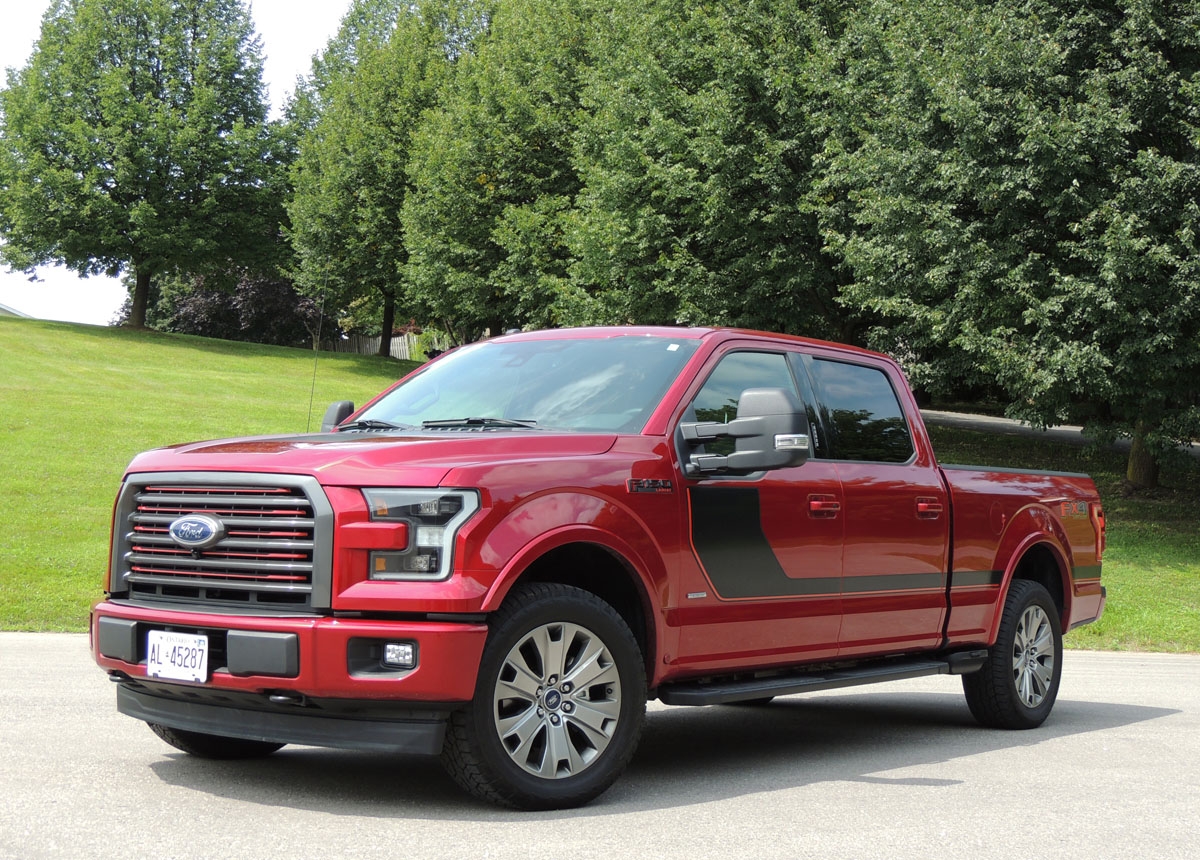
Ford continues to refine best-selling F-150
Photos by Neil Moore / Feature image: The Ford F-150 4×4 SuperCrew continues to cast a big shadow. Pictured here is the Lariat Special Edition package with 20-inch alloys, black running boards, body-coloured bumpers, and dark grille with red accents.
I had a large contraption to move. A trade show display might be the closest description, and to dismantle and then reassemble on the other end would take at least three hours.
Unless we moved it intact.
I appreciate the capacity of sport utilities, but even the three-row behemoths can’t match the minivan for schlepping large items. But a minivan has a roof, and that too creates limitations.
Fortunately, I had a friend with a pickup truck. These folks are the rock stars of the neighbourhood when it comes to moving bulky furniture and appliances, and in making the annual dump run.
To make a long story short, I saved several hours that morning – thanks to my buddy Gord – and chalked up another point in favour of the humble pickup.
Well, maybe not so humble, as there’s no shortage of these on our roads and driveways, particularly in the ‘burbs and more rural areas.
Ford has been braggy about the popularity of its F-150, and for good reason as it’s not only the best-selling pickup in Canada for the 51st consecutive year, it’s the top-selling vehicle, overall, in Canada.
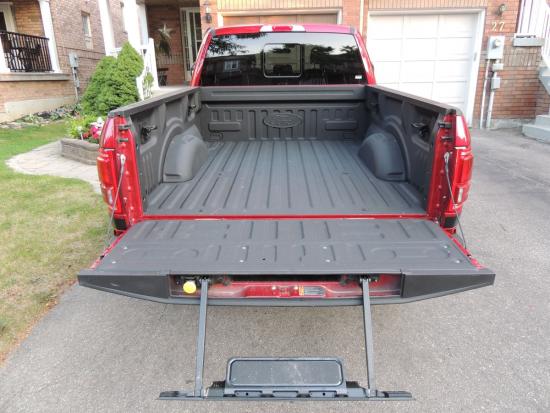
And that’s not because our country is chock-a-block with contractors. Such sales success – and this can be said of all pickups – results from an ever-improving product that’s not only increasing in brawn, but in all other aspects: style, handling, ride comfort, and technology.
In respect to Ford, the barebones work truck may still be a factor, but it’s at the bottom of a pricing ladder that spans 30K to nearly $80K, plus options. And taking you from bottom to top are seven trim levels, five engine options, two transmissions, three box lengths (5.0, 6.5, 8.0-feet), three cab sizes, 4×2 or 4×4, not to mention fuel tank volumes, axle ratios, wheel sizes, packages and copious stand-alone options.
Whew! I have no idea how many thousands of ways you can configure an F-150, but suffice to say that one can as easily be tailored to the tradesman as to the posh folk who need to tow an 8,000-lb horse trailer – while at the same time demanding the comforts of a luxury sedan.
My tester for the week, an F-150 SuperCrew Lariat, isn’t the top trim level – there’s still King Ranch, Platinum, Limited and the badass Raptor – but add enough stuff from the Ford parts bin and pricing jumps from $57,099 (add $100 for 2018) to a steep $74,619. That’s $17,520 in options, on which I’ll have more to say shortly.
Lariat isn’t available with “regular” cab (front bench only), which is fine as you can still get the solopreneur work truck in lower XL and XLT trim. Lariat comes with either SuperCab (60/40 flip-up rear bench) or SuperCrew – also with 60/40 bench, but longer seat cushions and limo-like leg room.
You can imagine that a truck with a cavernous passenger cabin and 6.5-foot cargo box would cast a large shadow. It does.
My vehicle filled the driveway at just over 20 feet long, 80 inches wide and 77 inches high with 9.3 inches of ground clearance. It also had power extendable side mirrors, which when extended, spanned 110 inches tip-to-tip. I had fun piloting this Godzilla on the open highway – riding high and all-powerful, able to crush puny ecocars under my big 275/55R all-terrain tires.
But such bulk is less at home on narrow city streets, and in particular tight parking spots where I felt like a bear at a tea party. Best to park in the back row where the crowd is thinner.
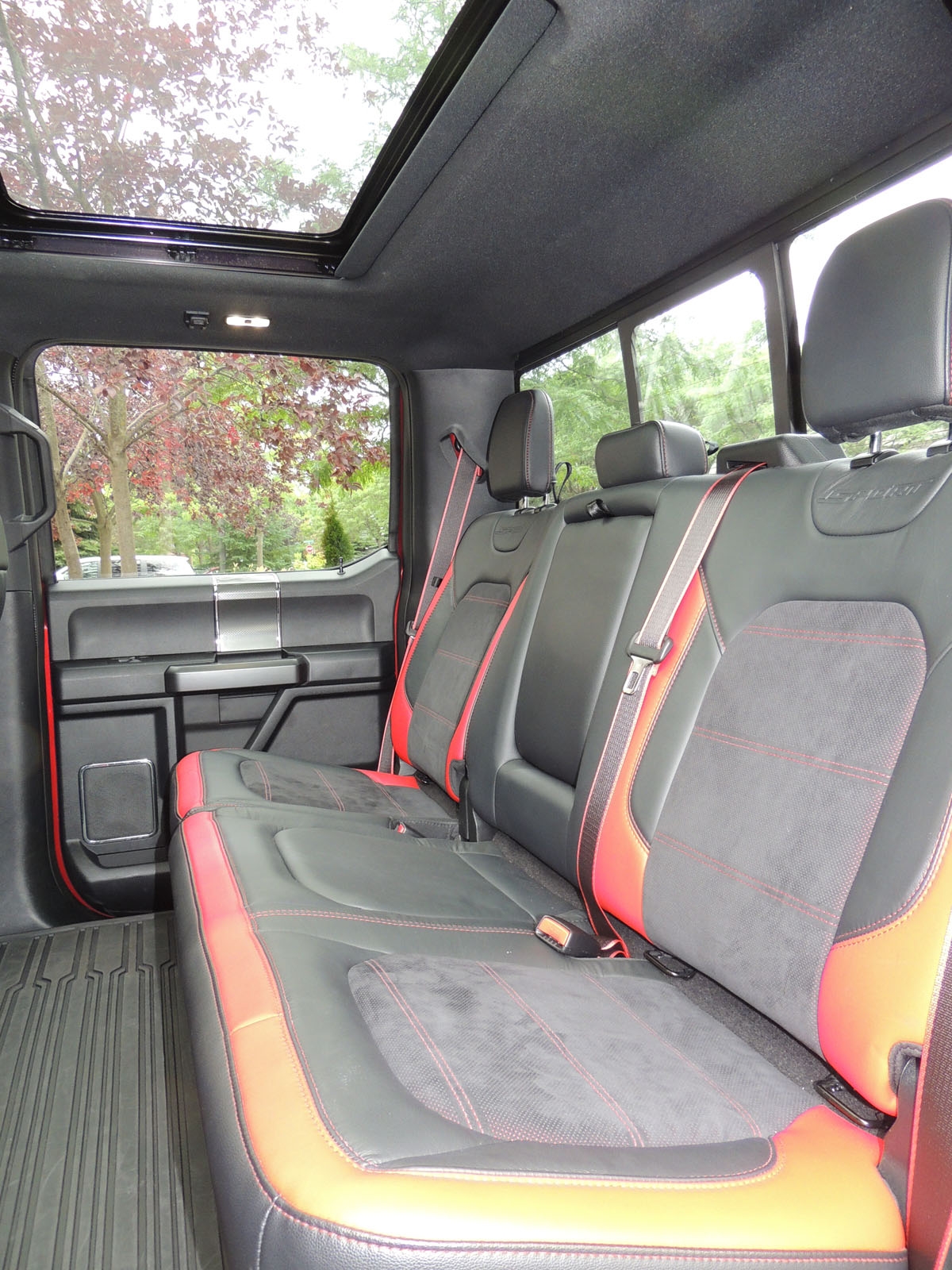
Dimensions aside, the F-150 isn’t as heavy as one might expect. Not long ago, the automaker switched to military-grade aluminum in the body. Not the stuff of beer cans, I was assured at a press launch near San Antonio in 2014. The new skin would make the F-150 more resistant to dents and rust, and lighter by 317 kg or 700 lbs., which is good for fuel economy.
I just tested a 2017 model, but for 2018 it will get an even thriftier version of its 2.7-litre V6 powertrain that sips as little as 12.0/9.4/10.8 litres/100km (depending on model). Displacement may seem paltry for a full-sized pickup, but this engine makes 325 hp and 375 lb/ft of torque – and 25 more pounds-feet for 2018.
That’s the base engine for Lariat models, but mine was upgraded to the twin-turbocharged 3.5-litre EcoBoost V6, delivering 375 hp and a whopping 470 lb/ft of torque. For 2017, the old six-speed automatic transmission was swapped for a new 10-speed with tow/haul and sport modes.
This is more than enough to launch the empty truck with gusto and maybe a little wheelspin if you leave it in 4×2 mode. Which is the go-to if you’re on dry roads and want to maximize fuel economy.
There are three other modes: 4A (distributes power between front/rear axles as required), 4H (for high-speed driving on wet or snowy pavement), and 4L for when you really get bogged down. It has additional gearing for torque multiplication.
Towing numbers are always a moving target when discussing trucks, as they rely on several variables – so I’ll skip the engineering lesson. In my tester’s particular configuration, towing maxes out at 5,352 kg (11,800 lbs) and payload at 1,320 kg (2,910 lb).
Bottom line: you no longer need a big V8 – although it’s still available. The 5.0-litre isn’t F-150’s most powerful engine option, but it still makes 385 hp and 387 lb/ft of torque.
In terms of niceties, my Lariat won’t rival the luxo Platinum or Limited models, but it was fitted with some pricey options and packages that amped it up well beyond “work truck” status.
For example, the $2,400 Lariat Special Edition package includes 20-inch alloys with beefy all-terrain tires, black running boards, body-coloured bumpers, dark grille with red accents and more unique bling.
And then there’s the creatively-named “Equipment Group 502A” that includes a huge pile of content for its $4,900 pricetag: heated steering wheel, heated rear seats, power tilt/telescoping steering, 10-speaker Sony audio, navigation, blind spot information with cross-traffic alert, and loads more.
The last one I’ll mention is the Technology package, giving you a 360-degree camera (a must with something this big), lane-keeping system and dynamic hitch assist.
That being said, even if you don’t want to spend large on extras, the standard Lariat is still well equipped. You get heated and cooled front bucket seats with 10-way power for both, and memory for the driver; dual-zone climate control; 110-volt, 400-watt power inverter; smart key with pushbutton start; backup sensors; and an eight-inch “productivity” screen.”
The latter includes a digital gauge cluster (oil pressure, temp, fuel, etc.) along with several tabs: trip and fuel usage, maintenance history, towing, offroad status, vehicle settings.
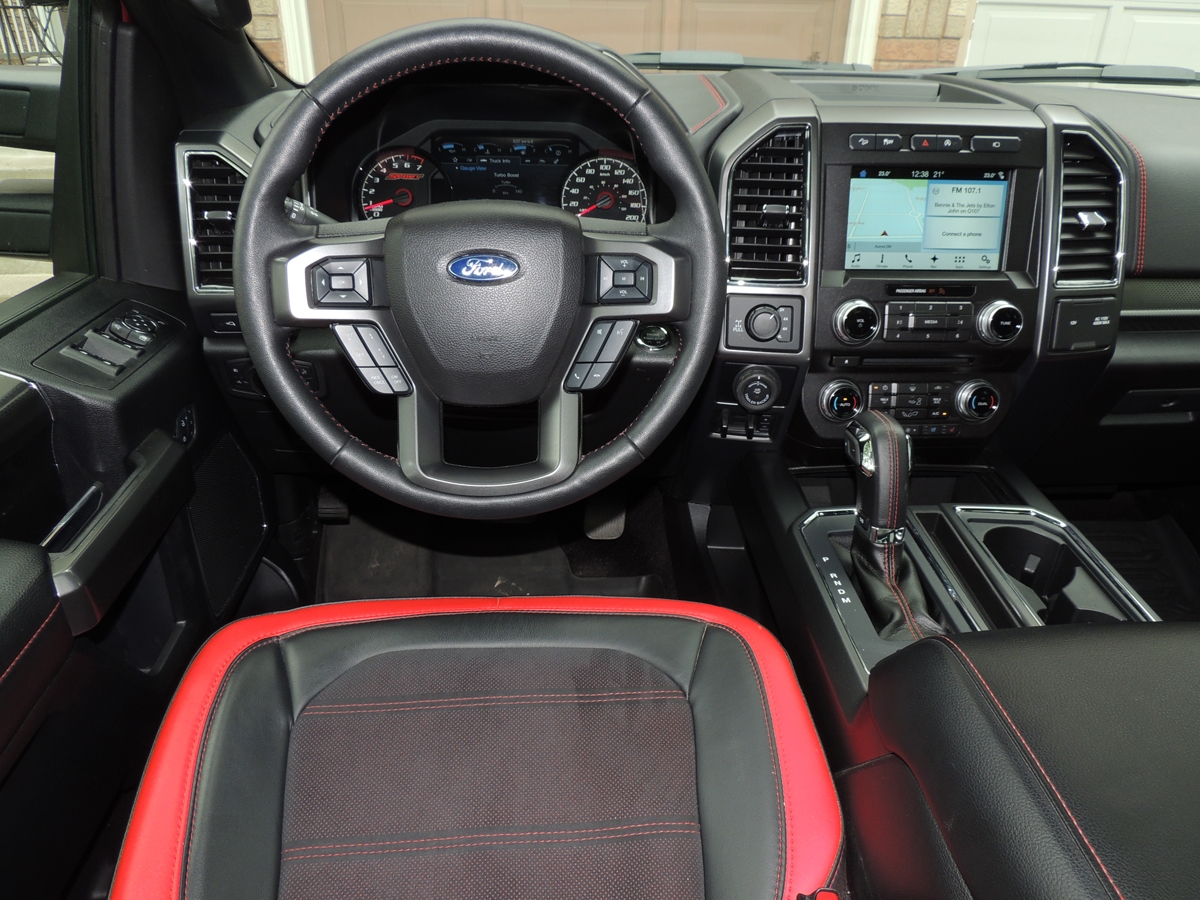
On the centre stack, the tablet-style infotainment screen with SYNC 3 is a vast improvement over previous versions, synching my phone lickety-split, and intuitively managing audio, climate, navigation, etc. with the usual swipe and select functions you’re used to.
The optional panoramic sunroof turns the cabin into a true greenhouse, adding to more glass than expected. Ford has resisted the styling trend, common to SUVs and crossovers, which has beltlines running high for a more fashionable look at the expense of visibility. F-150 not only has large side windows, but they dip at the mirrors to make use of these slabs that keep blind spots to a minimum.
And there’s plenty of storage throughout the cabin, with cubbies and powerpoints for keeping your electronics safely stowed – and charging. The centre console box can easily swallow a laptop, and has a removeable tray with coinholders.
The rear bench seats also flip up, creating a TV-swallowing cargo hold that’s more secure (and weatherproof) than the pickup bed.
There are still more thoughtful features than can be covered in this review. And that includes driver aids like optional park assist and Pro Trailer Backup Assist. The latter helps with a task I haven’t yet mastered, using a knob and the 360-degree camera.
The F-150 continues to sell in massive numbers despite an increasingly competitive segment. GM, Ram, Toyota and Nissan are all building excellent trucks, but none have yet dethroned Ford.
Bottom line: if you need a pickup and F-150 isn’t on your shopping list, it should be.
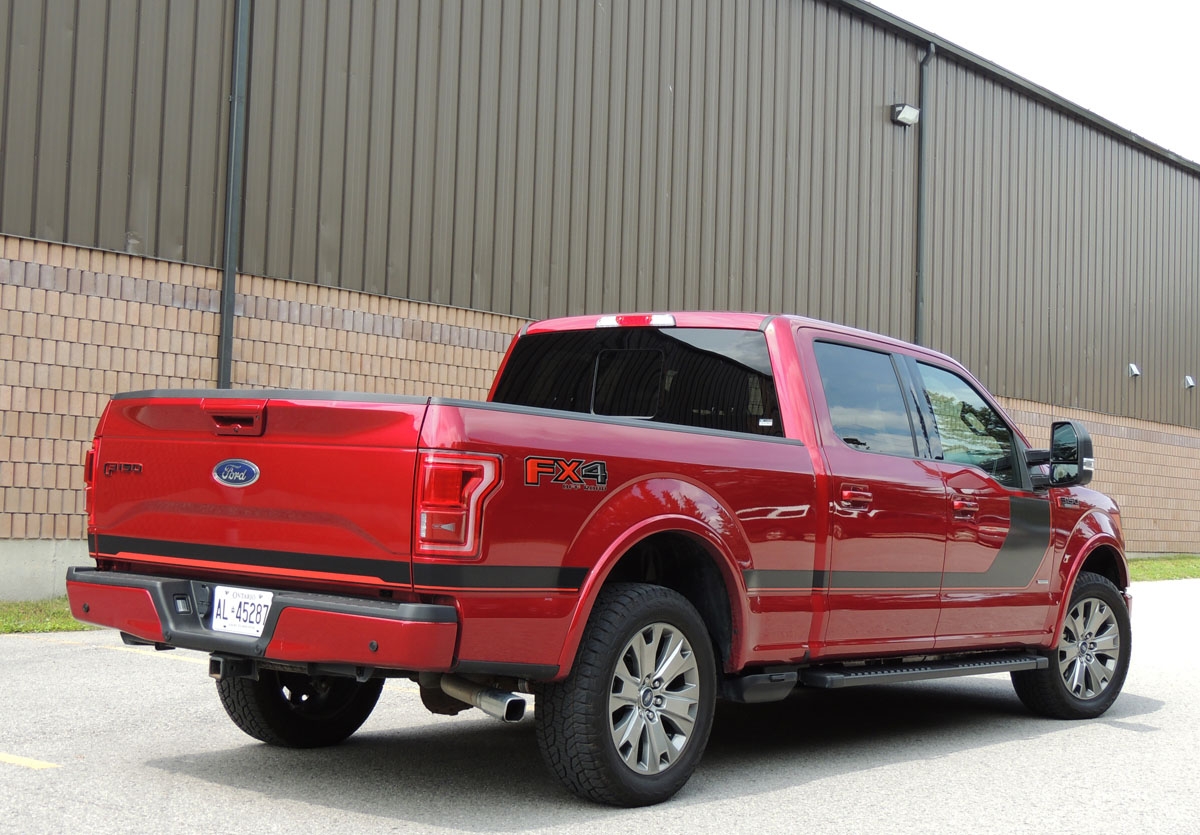
SNAPSHOT: Ford F-150 4×4 Lariat SuperCrew
BODY STYLE: full-size pickup truck
DRIVE METHOD: front-engine, four-wheel-drive
POWERTRAIN: (as tested) twin-turbocharged 3.5L EcoBoost V6 (375 hp, 470 lb/ft) with 10-speed automatic transmission
BOX SIZE: 6.5 ft
TOWING CAPACITY (highlights): max 2017 – 12,200 lbs (5,533 kg); max 2018 – 13,200 lbs (5,988 kg); as tested with 3.5-litre EcoBoost, SuperCrew and 6.5-foot box: 11,800 lbs (5,352 kg)
PAYLOAD (highlights): max 2017 and 2018 – 3,270 lbs (1,483 kg); as tested: 2,910 lbs (1,320 kg)
FUEL ECONOMY: as tested (3.5-litre, 4×4) 13.6/10.3 L/100km (city/hwy)
PRICING: as tested, Lariat 4×4 SuperCrew with 3.5L, $57,099 (add $100 for 2018), plus $17,520 in options: $74,619. See website for detailed option pricing. Freight and taxes extra.
WEBSITE: www.ford.ca

